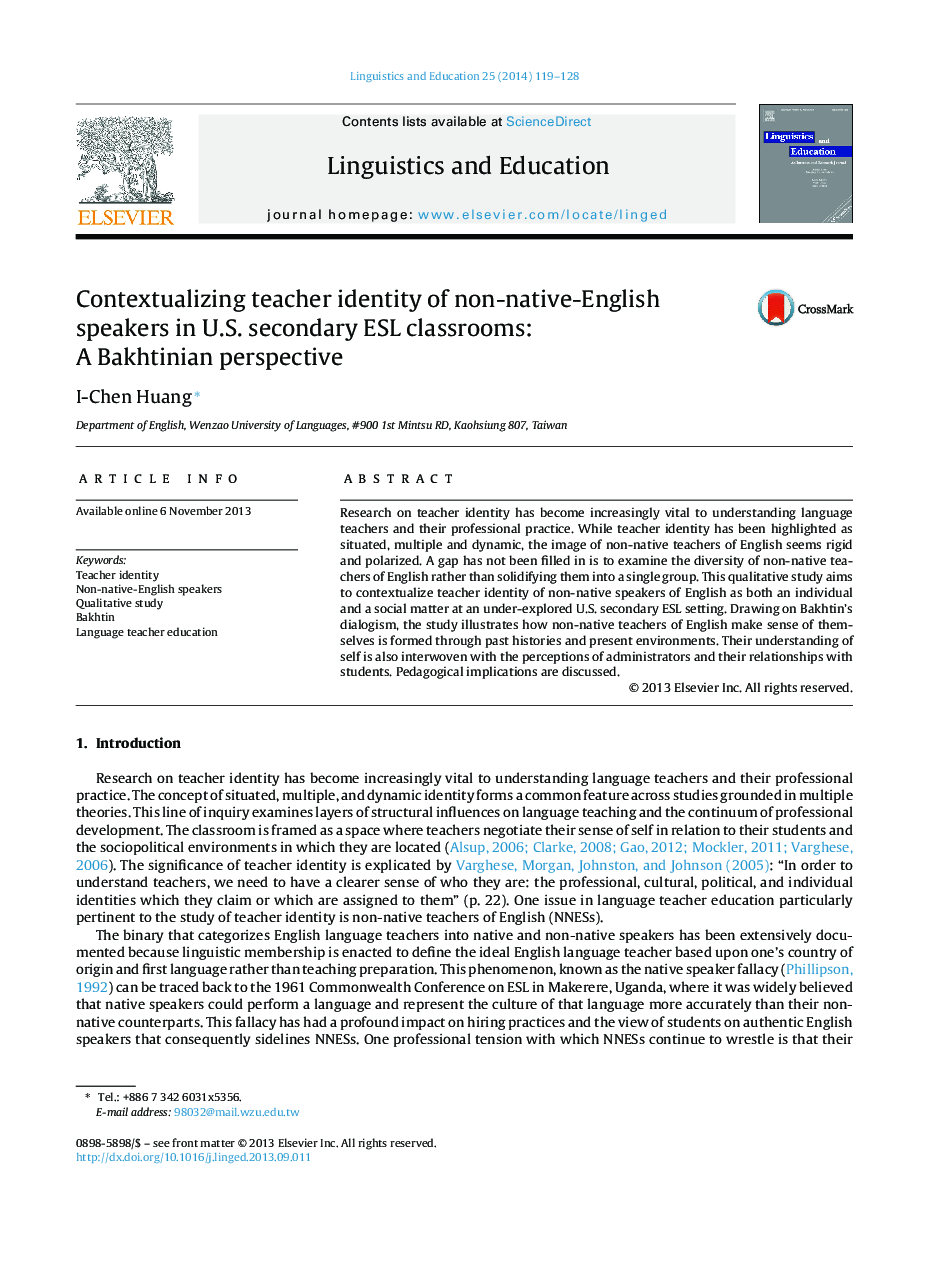| کد مقاله | کد نشریه | سال انتشار | مقاله انگلیسی | نسخه تمام متن |
|---|---|---|---|---|
| 366160 | 621352 | 2014 | 10 صفحه PDF | دانلود رایگان |
• Diversity within NNESs is shaped by social, personal, and schooling factors.
• NNESs’ accent can be peripheral while evaluating teachers’ qualifications.
• The students are exposed to diverse ways of using English outside the classroom.
• The NES administrators are non-native speakers of a language.
• NNES teachers’ classroom practice shows their understanding of self.
Research on teacher identity has become increasingly vital to understanding language teachers and their professional practice. While teacher identity has been highlighted as situated, multiple and dynamic, the image of non-native teachers of English seems rigid and polarized. A gap has not been filled in is to examine the diversity of non-native teachers of English rather than solidifying them into a single group. This qualitative study aims to contextualize teacher identity of non-native speakers of English as both an individual and a social matter at an under-explored U.S. secondary ESL setting. Drawing on Bakhtin's dialogism, the study illustrates how non-native teachers of English make sense of themselves is formed through past histories and present environments. Their understanding of self is also interwoven with the perceptions of administrators and their relationships with students. Pedagogical implications are discussed.
Journal: Linguistics and Education - Volume 25, April 2014, Pages 119–128
